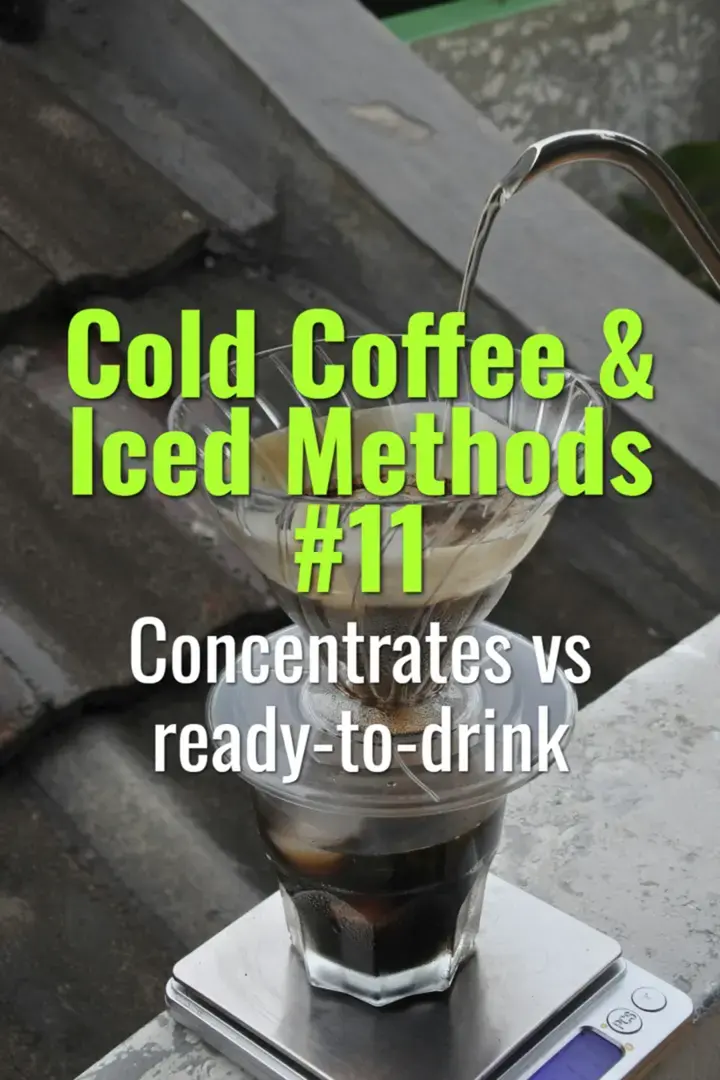Concentrates vs ready-to-drink
The difference between cold coffee concentrates and ready-to-drink formats, how they are prepared, and their roles in cafés and retail.
- Coffee Basics Nerds
- 2 min read
Article 11 of 12 in Cold Coffee & Iced Methods/

Cold Coffee Concentrates
- Definition: Strongly brewed cold coffee designed for dilution or mixing.
- Ratios: Typically 1:4 to 1:6 (coffee : water).
- Uses:
- Diluted with water to create ready-to-drink cold brew.
- Mixed with milk or alternative milks for lattes.
- Used as cocktail or culinary ingredient.
- Advantages:
- Flexible applications.
- Saves prep time during busy service.
- Allows stronger flavor base for creative drinks.
- Challenges:
- Must control dilution carefully for consistency.
- Higher microbial risk if stored too long.
Ready-to-Drink (RTD)
- Definition: Cold coffee brewed and packaged at serving strength.
- Ratios: Usually 1:12 to 1:16, similar to hot filter coffee strength.
- Formats: Bottled, canned, or kegged for direct consumption.
- Advantages:
- Consistent flavor, no dilution required.
- Convenient for consumers.
- Easier to market and sell in retail.
- Challenges:
- Less flexible in café service.
- Requires careful recipe development to maintain balance.
Flavor Differences
- Concentrates: Can taste too strong or syrupy if undiluted.
- RTD: Lighter body, balanced, ready for immediate enjoyment.
Shelf Life
- Both require refrigeration unless pasteurized/aseptic.
- Concentrates may degrade faster due to higher solids content.
- RTD formats often have more stable shelf lives when sealed.
Practical Café Use
- Concentrates: Ideal for batch prep, milk drinks, cocktails.
- RTD: Ideal for grab-and-go, bottled cold brew, or nitro taps.
Summary
Cold coffee can be produced as concentrates (versatile, strong bases for dilution and mixing) or as ready-to-drink beverages (convenient, consistent, customer-ready). Cafés often use concentrates for service flexibility, while retail favors RTD formats for ease of use.